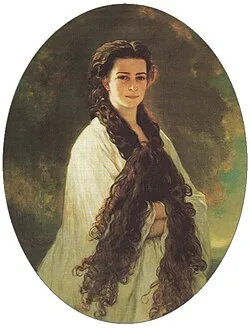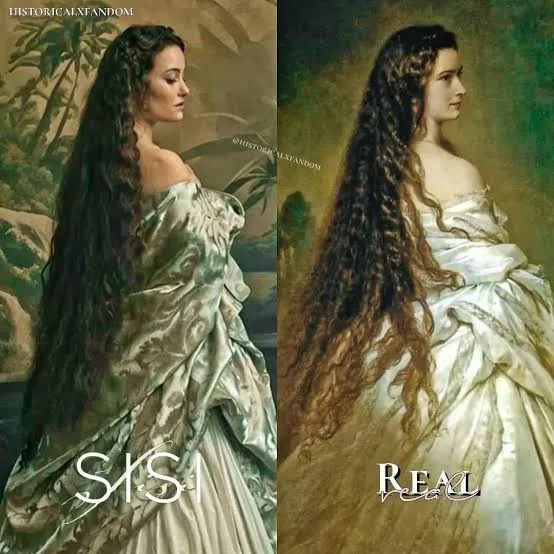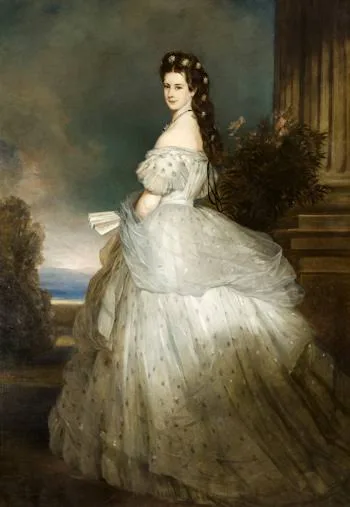Empress Elisabeth of Austria, affectionately known as “Sisi,” has long been a subject of fascination for historians and art enthusiasts alike. The 19th-century empress, wife of Emperor Franz Joseph I, was renowned for her striking beauty, independent spirit, and meticulous attention to her public image. A closer examination of her life reveals a calculated effort to craft her persona through portraits and photographs, offering a nuanced understanding of this enigmatic figure.
Early Life and Marriage
Born on December 24, 1837, in Munich, Bavaria, Elisabeth was raised in a strict aristocratic household. Her early life was marked by a passion for literature, poetry, and horse riding. At the age of 16, she married Emperor Franz Joseph I of Austria, solidifying an alliance between the Austrian and Bavarian royal families. This union would shape her destiny and influence her image-crafting endeavors.

The Art of Image Crafting
Empress Elisabeth was acutely aware of the power of visual representation in shaping public opinion. She carefully curated her image through portraits and photographs, often collaborating with prominent artists and photographers of her time. Her objective was to convey an aura of elegance, refinement, and majesty, while also showcasing her intelligence and strong will.
One notable example is her work with Franz Xaver Winterhalter, a celebrated portrait painter. Elisabeth sat for several portraits with Winterhalter, resulting in iconic works that showcased her beauty and poise. These portraits were not merely representations of her physical appearance but also conveyed her status as a powerful and influential figure.
Photography and the Democratization of Image
The advent of photography in the mid-19th century presented new opportunities for Empress Elisabeth to control her image. She sat for numerous photographic sessions, often carefully selecting the settings, poses, and attire. These photographs were then widely disseminated, allowing her to reach a broader audience and further solidify her public persona.
A Calculated Persona
Through her portraits and photographs, Empress Elisabeth crafted a calculated persona that balanced her royal duties with her desire for independence and self-expression. Her image was meticulously managed to convey a sense of approachability, while maintaining the majesty and dignity required of a royal figure.
Legacy and Impact
Empress Elisabeth’s legacy extends beyond her carefully crafted image. Her influence on Austrian culture, fashion, and politics is still felt today. Her passion for literature and poetry led to the establishment of the Austrian National Library’s manuscript collection. Additionally, her love of horse riding and equestrian sports helped popularize these activities among the aristocracy.

A New Perspective
Recent studies have shed new light on Empress Elisabeth’s life, revealing a complex and multifaceted individual. Her image-crafting efforts, once seen as mere vanity, are now understood as a deliberate attempt to shape public opinion and assert her influence in a patriarchal society.
In conclusion, Empress Elisabeth of Austria’s life offers a fascinating glimpse into the art of image crafting and the power of visual representation. Her legacy serves as a testament to the enduring impact of a carefully managed public persona and the complexities of a woman who defied convention in her time.
Sources:
- “Empress Elisabeth of Austria: A Biography” by Brigitte Hamann
- “The Empress Elisabeth of Austria: Portraits and Photographs” by exhibition catalog, Kunsthistorisches Museum, Vienna
- “Sisi: Empress Elisabeth of Austria” by exhibition catalog, Hofburg Palace, Vienna

Image Credits:
- Portrait of Empress Elisabeth of Austria by Franz Xaver Winterhalter (1865)
- Photograph of Empress Elisabeth of Austria by unknown photographer (1870s)
This comprehensive report offers a fresh perspective on the enigmatic Empress Elisabeth, highlighting her calculated efforts to shape her public image and legacy. Through her portraits and photographs, she crafted a persona that continues to captivate audiences today.
